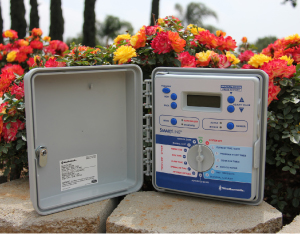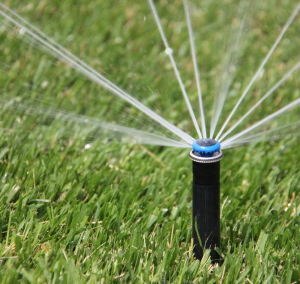YOUR HOME - EXTERIOR LOOKS
Weather-Based irrigation Controllers and Why You Need One
July, 2014 - Issue #117
 |
Most irrigation systems have remote control valves which control the water flow to the sprinklers. These valves are automated by a controller programmed to turn the valves (and sprinklers) on for specified durations of time on certain days and times.
Unfortunately, when and how long sprinklers should run is a moving target. It changes throughout the year along with the seasons and the weather patterns. Oftentimes, people do not reprogram their controllers as the weather changes and this results in wasted water. (How many times have you seen sprinklers running in the rain?)
"Typical SCV soil has a lot of clay
in it and absorbs water slowly.
The WBIC accommodates for this by RUNNING THE SPRINKLERS through a few very-short cycles, allowing water to infiltrate the soil before more is applied."
in it and absorbs water slowly.
The WBIC accommodates for this by RUNNING THE SPRINKLERS through a few very-short cycles, allowing water to infiltrate the soil before more is applied."
In addition to weather, WBICs are programmed according to the type of plants being watered, the type of sprinkler (or drip irrigation) being used, the type of soil and geographical features like slopes. Calculating this information, the controller determines how often and how long the sprinklers should run. The automated daily sprinkler programming adjusts for everything from heat waves to rain storms - applying the correct amount of water under all conditions.
 |
WBIC technology is something residents should definitely consider as a way to increase landscape sprinkler efficiency. Water is too precious to waste.
To get a WBIC you must register for an online class. Visit www.clwa.org and click on the Smart Irrigation Controller Rebate button.
|
||||||||||||||||||||||||||||




